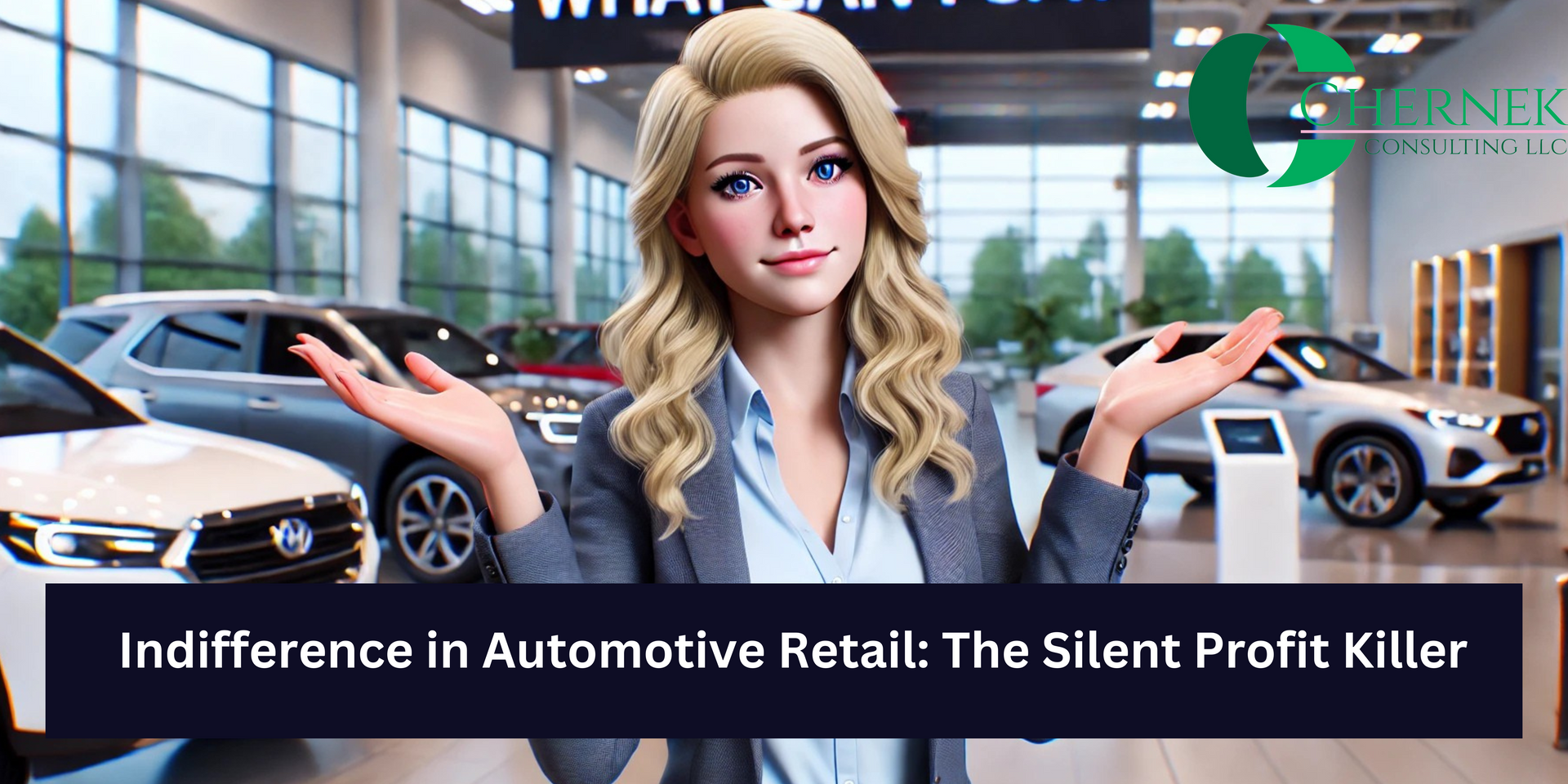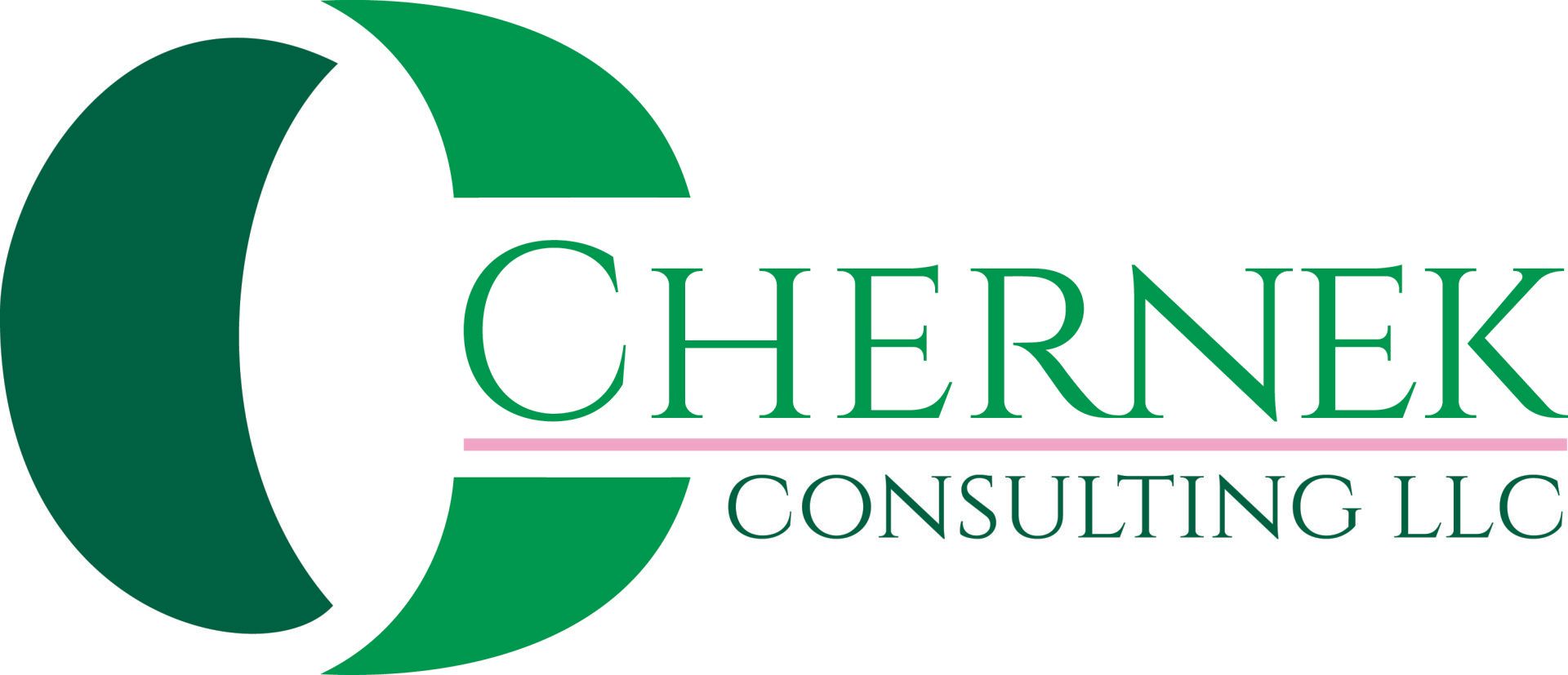BECKY'S BLOG
@rchernek

Over the last six months, the buzz around improving F&I performance has grown louder. Everyone’s talking about “getting back to basics” as the magic fix for today’s challenges. Sure, it sounds great—but is that enough to stop the ship from sinking?
Let’s be honest: since COVID, selling cars was easy. Customers flooded dealerships, and it didn’t take much to close a deal. A handshake and a smile were often all it took. But now, things have shifted. The market isn’t as forgiving, and many dealerships are struggling to adapt.
Yes, the basics matter, but there’s something deeper at play—a dangerous attitude of indifference. I’ve been in hundreds of dealerships, and what I see today is alarming. It’s like the industry is sleepwalking while the house is burning. Are dealers even paying attention? Are they willing to make the hard changes needed to turn things around?
The Desk: Where Chaos Begins
The desk is the heartbeat of the dealership—the hub where it all starts. But instead of pumping out efficient, profitable deals, it’s often the source of chaos.
Years ago, F&I managers were respected as gatekeepers. They weren’t just handling paperwork; they were protecting the dealership’s assets and managing lender relationships with precision. Fast-forward to today, and much of that responsibility has been dumped on desk managers—all in the name of “speeding up the deal.”
Here’s the catch: no one’s holding these desk managers accountable. Shotgunning deals to lenders without understanding the total cost of sale has become the norm. Sloppy credit applications, careless errors, and a lack of structure are creating a mess that F&I managers are left to clean up.
When deals hit F&I, they’re riddled with issues—missing documents, unchecked details, and no clear process. This disrupts the flow, slows the deal to a crawl, and frustrates customers. It’s a perfect recipe for lost profits and wasted time.
Broken Processes, Broken Performance
Dealers often wonder why F&I performance is lagging, but the answer is staring them in the face: broken processes. When there’s no accountability, every department operates in silos. The result? Indifference creeps into your culture, and mediocrity becomes the standard.
Ask yourself:
- Are your desk managers partners with F&I, or are they working against them?
- Are they ensuring every cash deal is turned to F&I?
- Do they know their lenders, or are they just guessing?
- Are they sticking to consistent pencils, or throwing out 84-month terms with no money down as a starting point?
If you’re not checking these things regularly, you’re leaving money on the table. A worksheet is no different from a menu—both need to be precise, consistent, and aligned with a process.
How Chernek Consulting Can Help
At Chernek Consulting , we understand these challenges and provide solutions that work. Our services are designed to address the root of the problem: your dealership’s process and culture.
We offer:
- Customized In-House Training tailored to your dealership’s unique needs.
- Virtual Training Programs to ensure ongoing education for your team.
- AI Champion Roleplay to simulate real-world scenarios and elevate team performance.
- Comprehensive Process Audits to identify inefficiencies and areas for improvement.
- Desk and F&I Alignment Programs to create a cohesive, results-driven culture.
When you work with Chernek Consulting, you’re not just improving performance—you’re transforming your dealership into a profit powerhouse.
The Cost of Complacency
Here’s the harsh reality: indifference costs you talent. Why would top performers stick around in a dealership that tolerates chaos? Talented people want to work in an environment with structure, accountability, and a commitment to excellence. If you’re not providing that, they’ll find a dealership that does.
I recently asked my F&I Today group what above-average F&I performance should look like. The consensus? It’s not just about numbers; it’s about alignment. The desk and F&I need to operate as one unit, with shared goals and mutual accountability.
Fix the Process, Fix the Culture
Dealers, if you’re serious about turning things around, it’s time to do more than “get back to basics.” You need to fix the root of the problem: your process. A strong, consistent process doesn’t just improve performance—it transforms your culture.
When everyone is on the same page—desk managers, F&I, and sales—you create a dealership that runs like a well-oiled machine. Customers feel the difference. Deals close faster. Profits grow.
At Chernek Consulting, we specialize in helping dealerships implement these changes effectively. The question isn’t whether you can change—it’s whether you will .
Visit Chernek Consulting for more information or call 866-894-1899 to schedule your consultation today. For F&I beginners be sure to sign up for Chernek Consulting Virtual Pro interactive F&I courseware upgrade to AI Champion Roleplay! Contact Becky to find out more details, available for individual users and dealer group levels. We also customize all training content to fit your exact requirements.

Recently I’ve experienced a strange déjà vu when providing onsite consultations. I’m reminded of a time when I was working with a dealer in Arkansas who purchased a Buick / GMC store. He told me there wasn’t much meat on the bone and not to expect much in F&I performance. Most customers paid cash or had prime credit.
“No problem,” I thought. After all, I can positively impact any operation. But I couldn’t help wonder why the dealer didn’t get any tier three or four business. The customers at dealerships up the street seemed to represent a full cross section of buyers. It didn’t make sense.
I continued to ask questions until the dealer came up with a brilliant idea (or he got tired of my harping). He decided to spiff the sales people one weekend $40.00 per write-up. “Just come to the desk with whatever write-up, no matter the credit, and you’ll get $40.00.” The following Monday, the dealer called to report he had plenty of tier three and four customers.
If you’re reading between the lines, you already know where I’m going. The store didn’t have any subprime lenders – or the F&I manager wasn’t keen on working subprime customers. The salespeople thought, “Why bother selling a customer a car if they said they had slow or derogatory credit history?” So they broomed the customer, sent them packing to the competitor down the street and moved to the next customer who could buy a car.
Is this you? Be honest. Because this is exactly what is happening in dealerships throughout the United States today. This is the dark side of the pandemic’s silver lining for auto retail.
The front is making big profits on preowned cars today. They don’t have to take the skinny deals or cut profit to swallow a lender fee. Those vehicles aren’t easy to come by, so they’re being saved for the customer who’s going to pay all the profit. Who can blame them?
But will it pay off in the long run? Are you sending customers to your competitor, CarMax, Carvana, Vroom or independent dealers who are lining their pockets with the deals you don’t want? The sales manager may not see the value in a lower-tier customer today, but your competition does. Because when you treat a customer with slow pay history right, you have a customer for life.
What about the customer who just paid full gross? Will they use your service department? Does it matter? That’s a discussion for another day.
You may not realize it, but many of the larger dealer groups have their own in-house financing with internal scoring metrics. They’re not only going to sell more cars; they’ll earn more profit doing it. They will take the market share if you don’t do something about it.
Some say, “Ok, let them,” but remember when CarMax offered to put an appraisal on every trade whether the customer was going to buy a car from them or not? Talk about clever! Today, customers go to CarMax to get a trade value even before they step foot in a dealership. In fact, your sales manager likely sends the customer to CarMax to get a trade value! Is that you?
Today’s most successful dealers aren’t fixed in their ways. They have a growth mindset and continually adapt to the changing market!
This bubble won’t last forever. Do you have the necessary skill-set and processes in place today to meet market conditions tomorrow?
Schedule a 15-minute Zoom call today!
Unparalleled Experience + Analytics + Gold-Standard Training = IMPACT
Chernek Consulting, founded in 2001, offers automotive dealers exceptional experience-based consultation for multipoint, multi-brand automotive groups to significantly impact performance. Rebecca Chernek has worked with industry leaders such as JM&A, AutoNation, NCM Institute, NCM 20 Groups, NADA 20 Groups, Mercedes Benz Financial Services, Sym-Tech Dealers Services and more.
Rebecca’s comprehensive analysis identifies operational and team strengths and weaknesses. Her focus is on:
1) plugging profit leaks
2) getting the customer on the right car at the get-go
3) cultivating customers for life
4) digitizing processes for maximum efficiency and profit
It’s the little things you do that can make a big difference.
CALL BECKY CHERNEK DIRECT AT 866-894-1899 schedule a 15 - minute call today!

